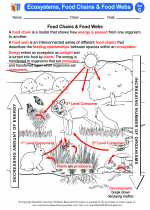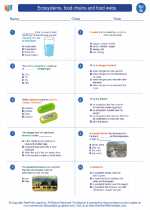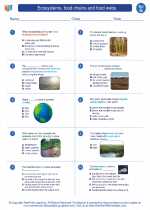Mesosphere
The mesosphere is the third layer of the Earth's atmosphere, located above the stratosphere and below the thermosphere. It extends from about 50 kilometers (31 miles) to 85 kilometers (53 miles) above the Earth's surface.
Characteristics of the Mesosphere
1. Temperature: The mesosphere is the coldest layer of the Earth's atmosphere, with temperatures decreasing with altitude. Near the top of the mesosphere, temperatures can drop to as low as -90°C (-130°F).
2. Meteors: The mesosphere is the region where most meteoroids burn up upon entering the Earth's atmosphere. These burning meteoroids produce streaks of light known as meteors or shooting stars.
3. Air Density: The air in the mesosphere is extremely thin, and the atmospheric pressure is significantly lower compared to the layers below it.
Importance of the Mesosphere
The mesosphere plays a crucial role in protecting the Earth from the impacts of meteoroids. As meteoroids enter the mesosphere, they experience friction with the air molecules, causing them to heat up and disintegrate before reaching the Earth's surface. This process helps to prevent potential damage from large meteoroids.
Study Guide Questions
- What is the temperature range in the mesosphere?
- How does the mesosphere protect the Earth from meteoroids?
- What is the altitude range of the mesosphere?
- What phenomenon is commonly observed in the mesosphere?
Now that you have learned about the mesosphere, you can use this study guide to review and test your knowledge of this important layer of the Earth's atmosphere.
[Mesosphere] Related Worksheets and Study Guides:
.◂Science Worksheets and Study Guides Seventh Grade. Ecosystems, food chains and food webs

 Activity Lesson
Activity Lesson
 Worksheet/Answer key
Worksheet/Answer key
 Worksheet/Answer key
Worksheet/Answer key
 Worksheet/Answer key
Worksheet/Answer key
 Vocabulary/Answer key
Vocabulary/Answer key
 Vocabulary/Answer key
Vocabulary/Answer key
 Vocabulary/Answer key
Vocabulary/Answer key
 Vocabulary/Answer key
Vocabulary/Answer key
 Vocabulary/Answer key
Vocabulary/Answer key
